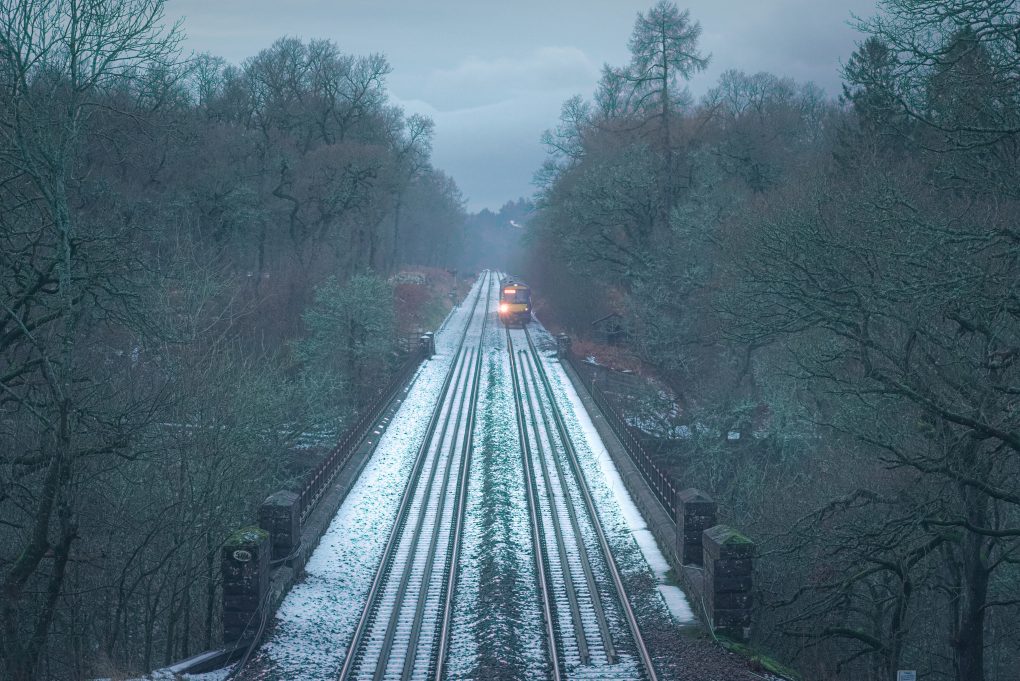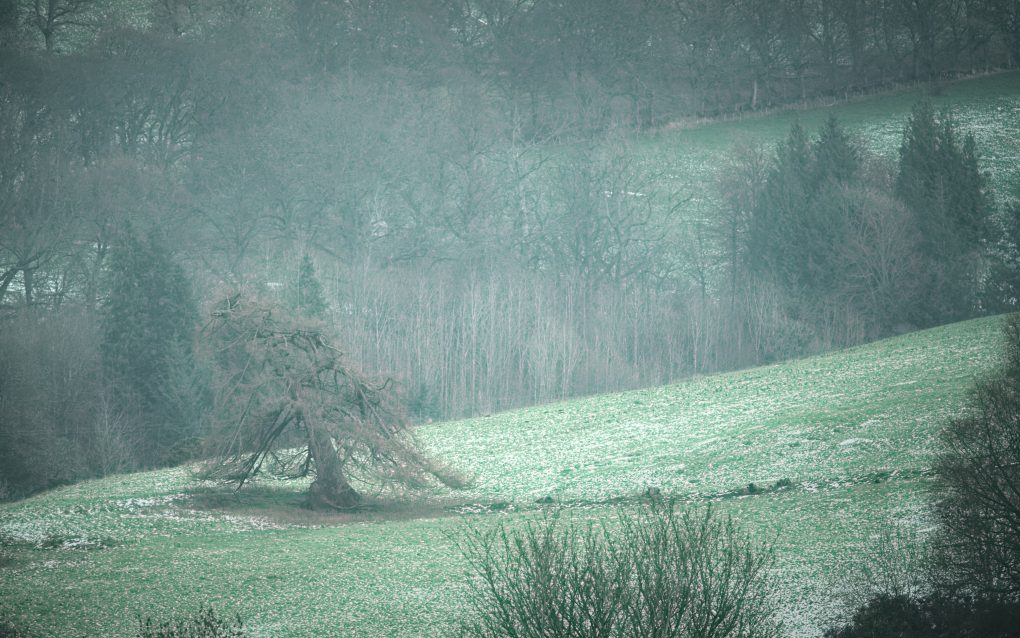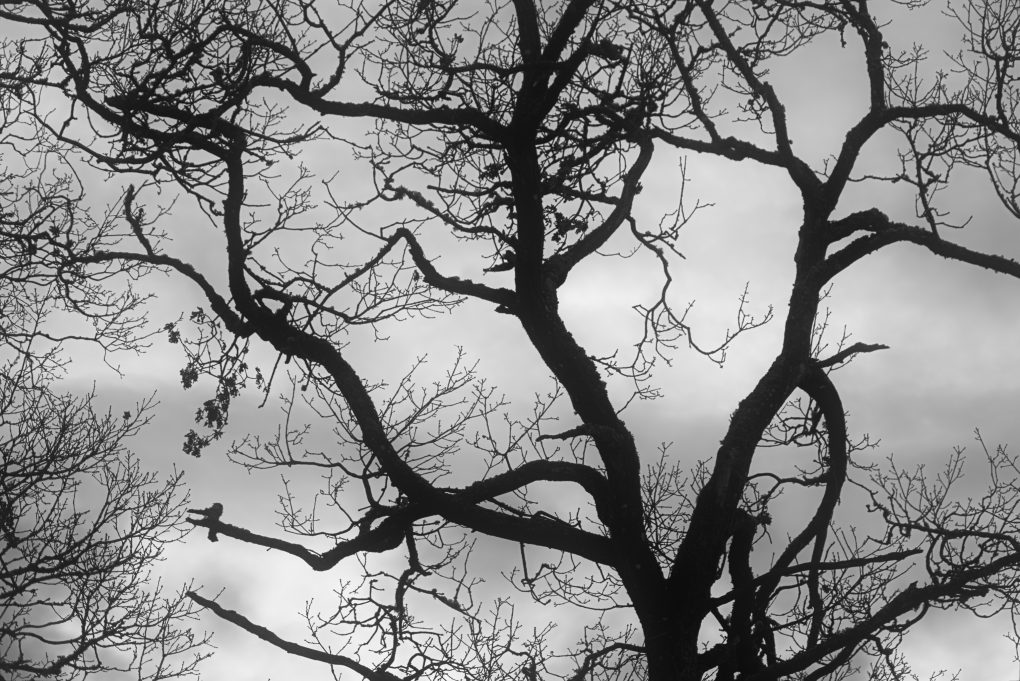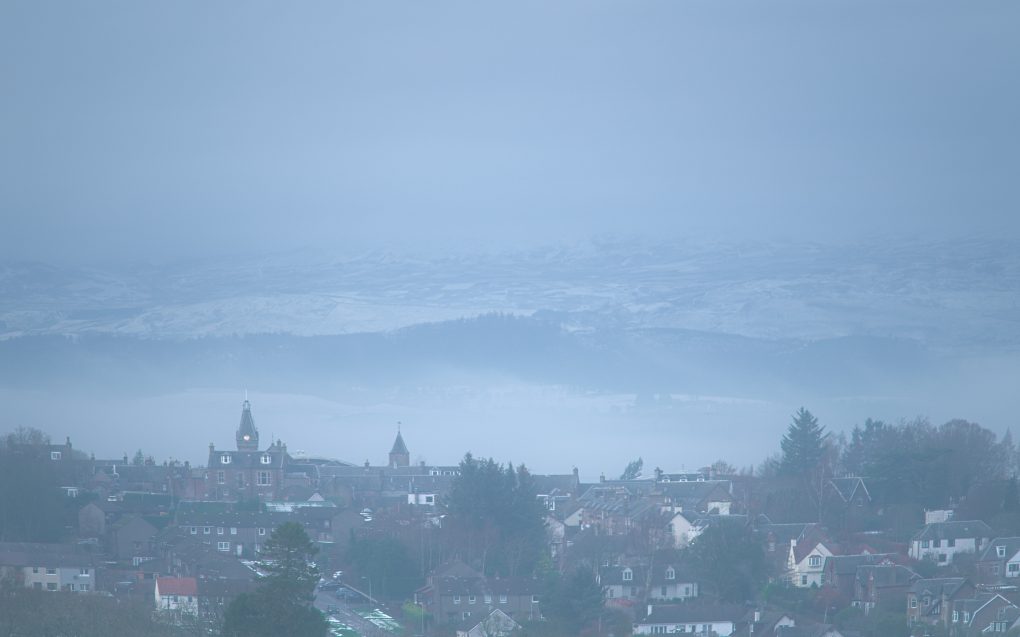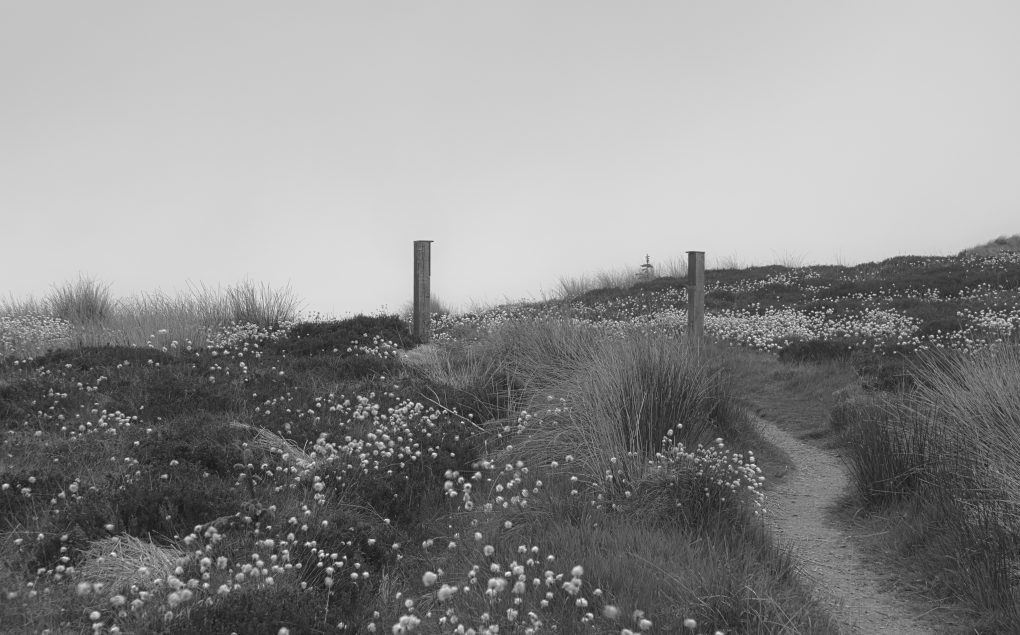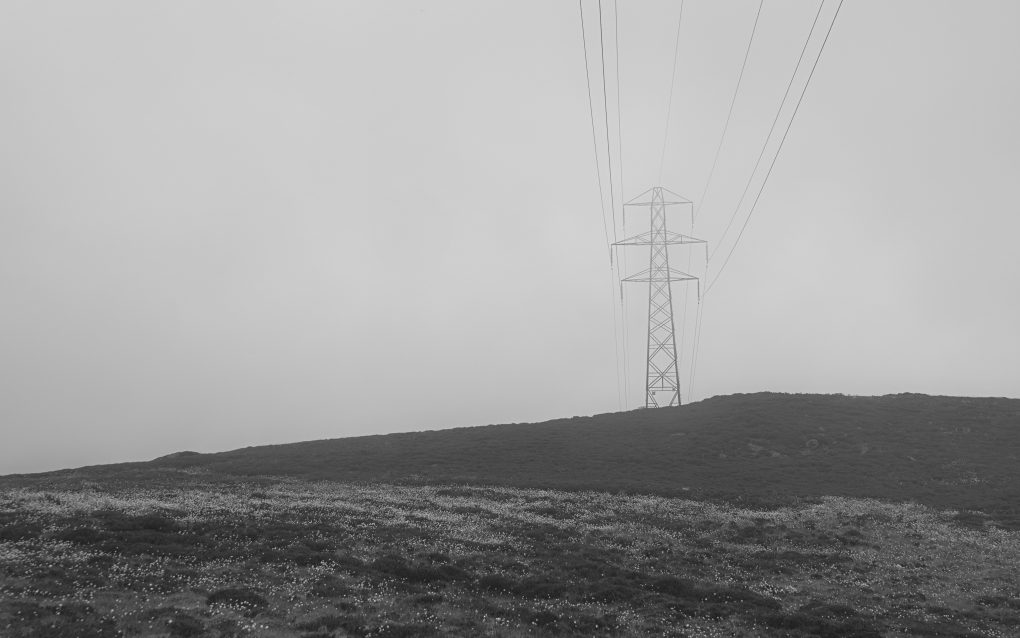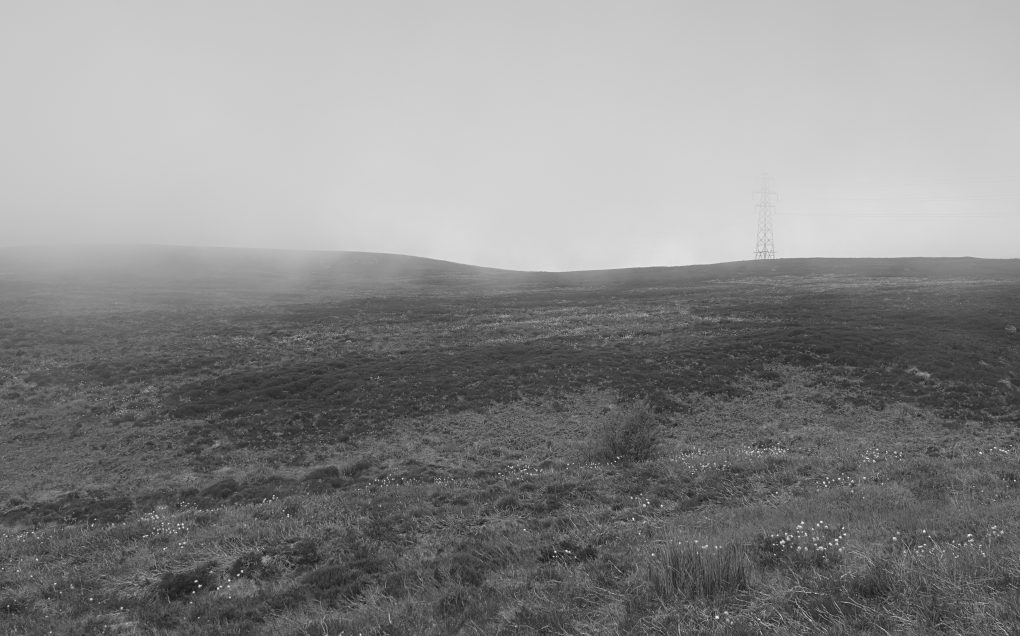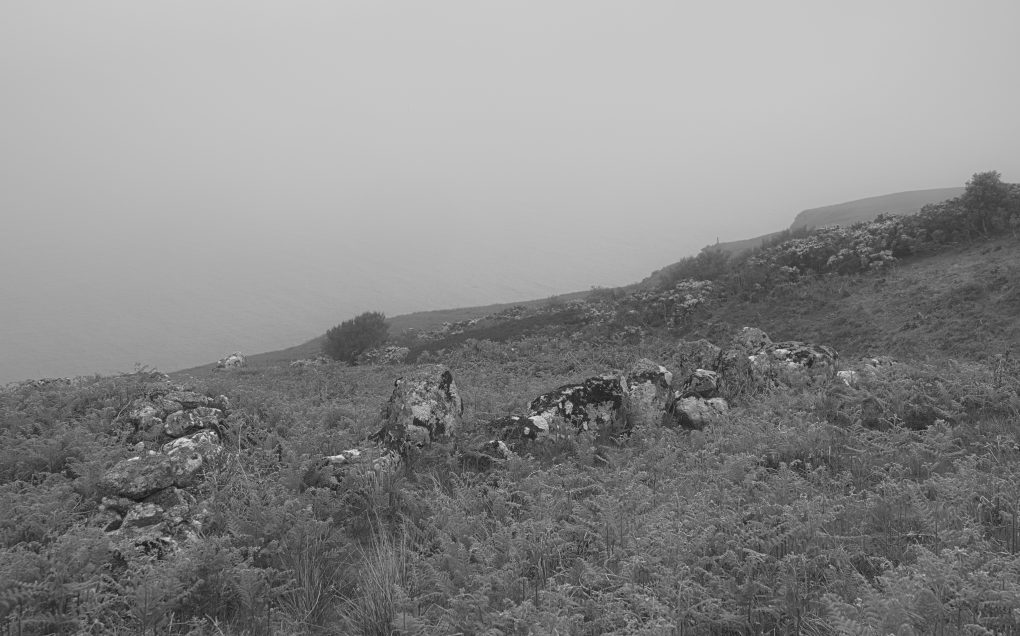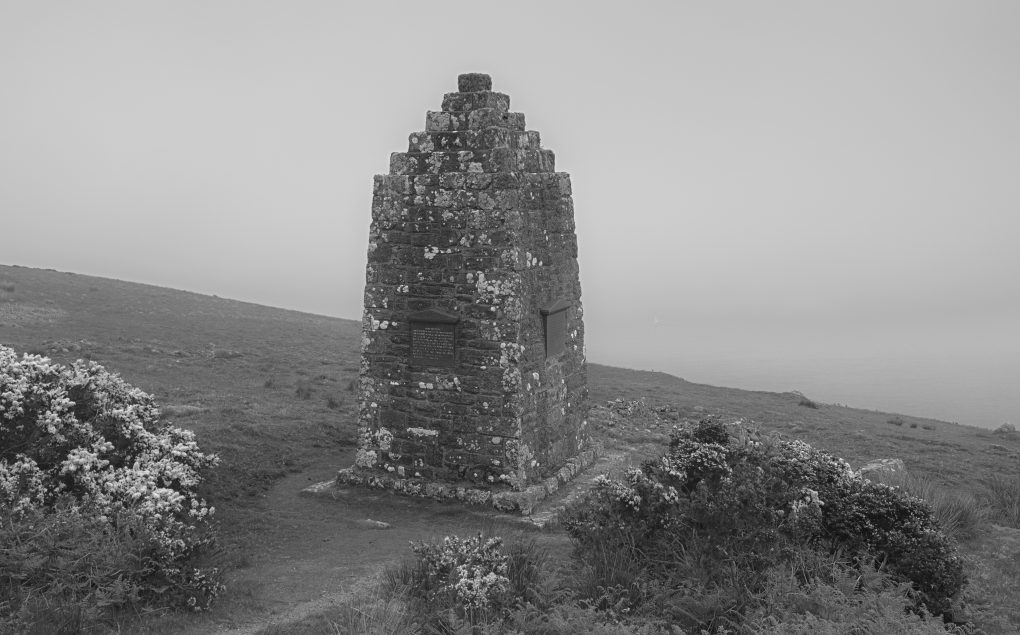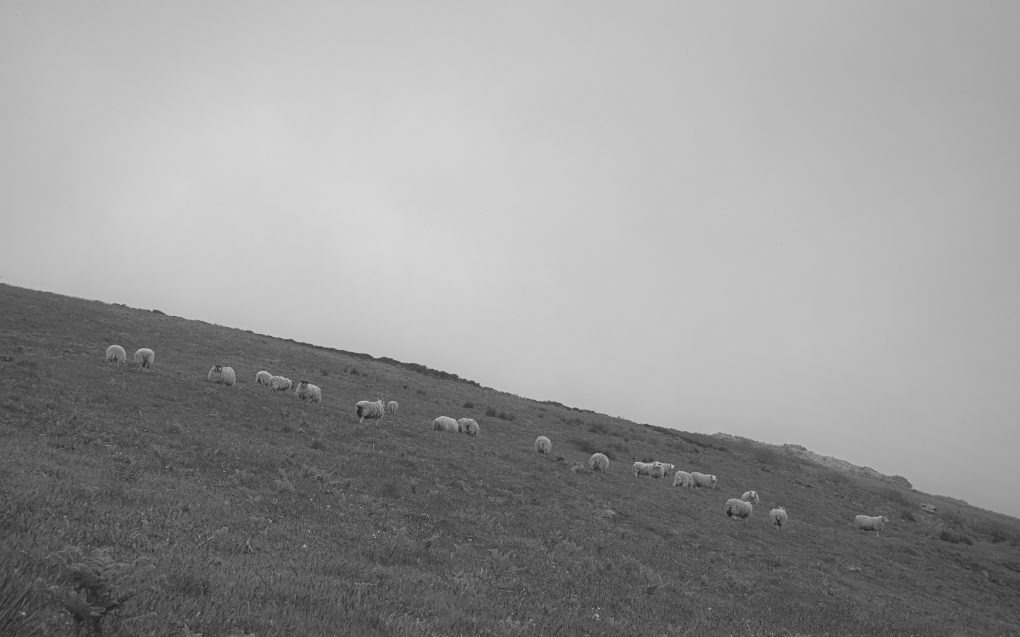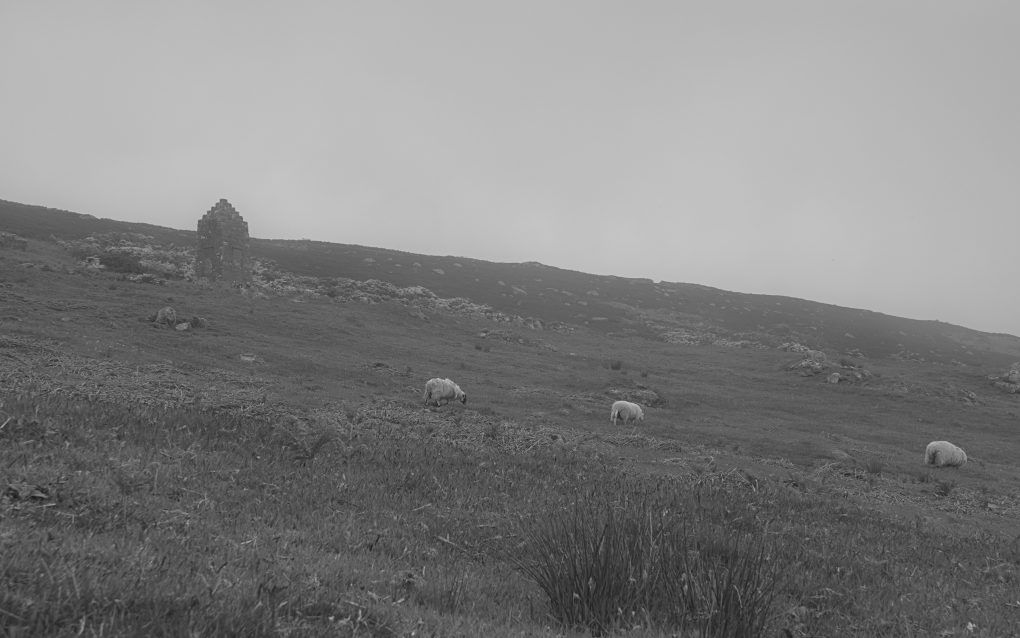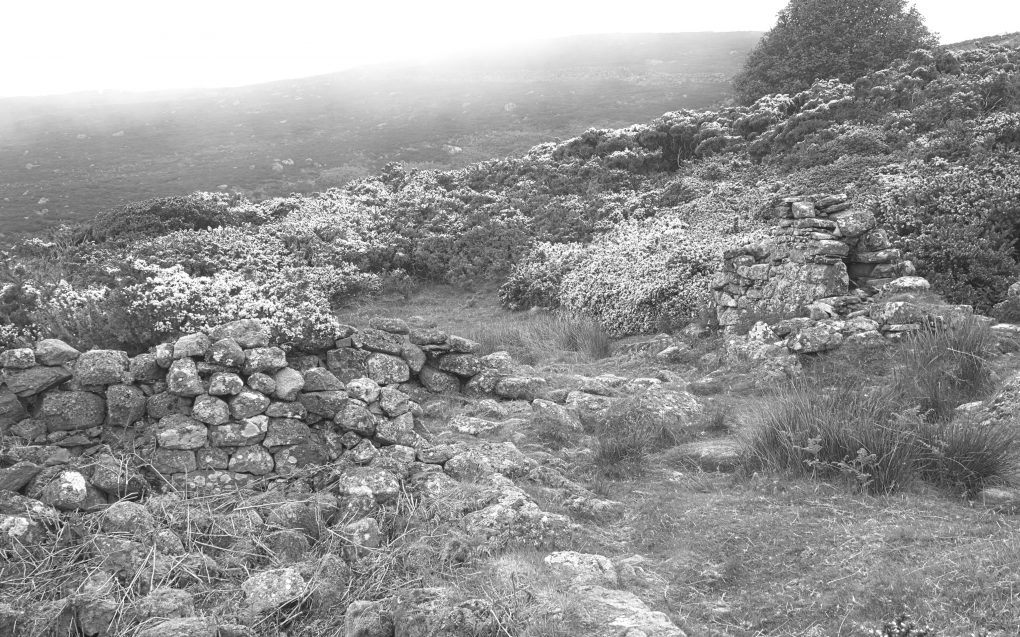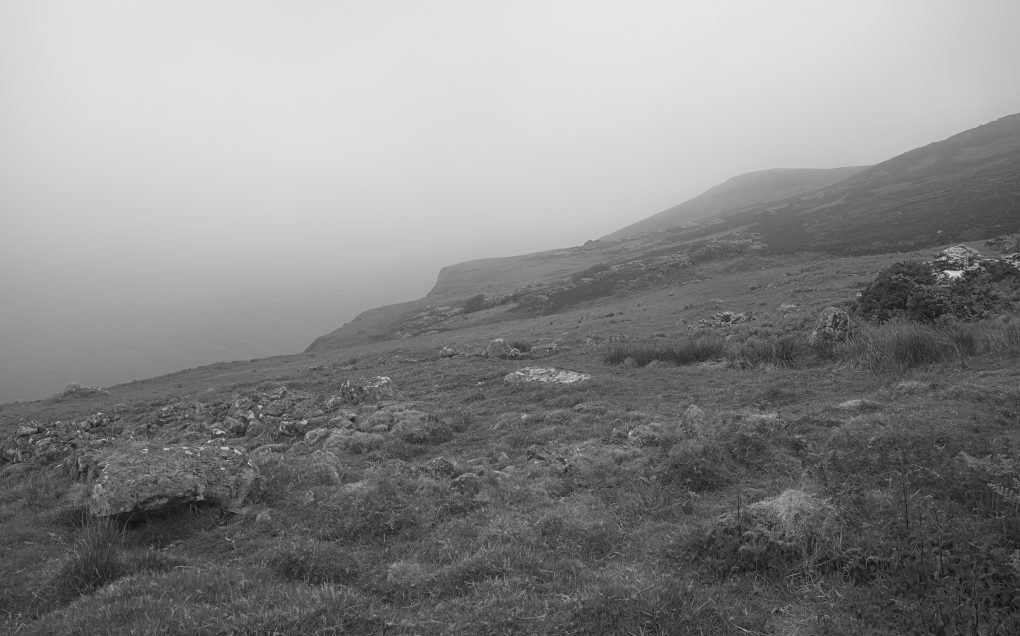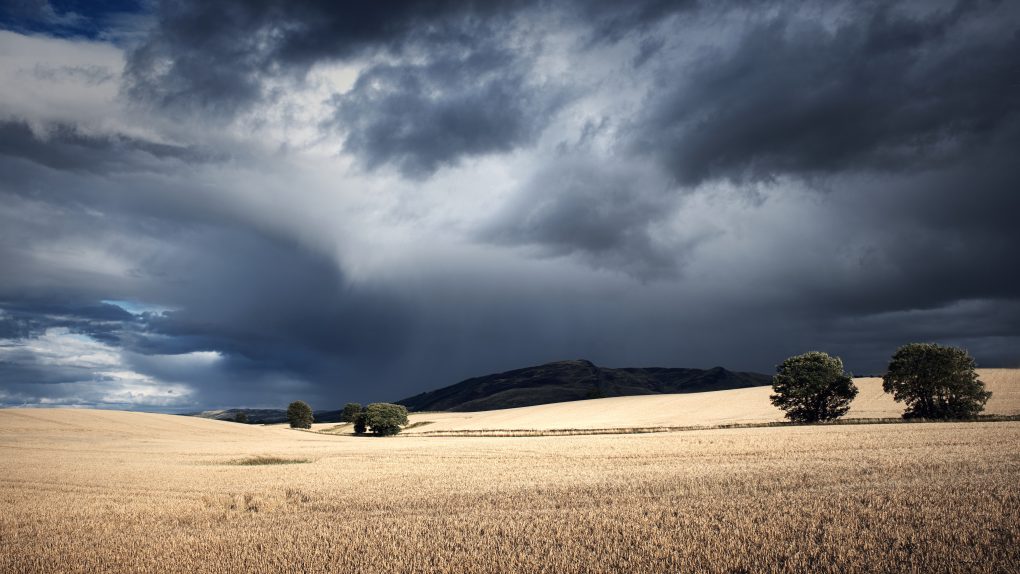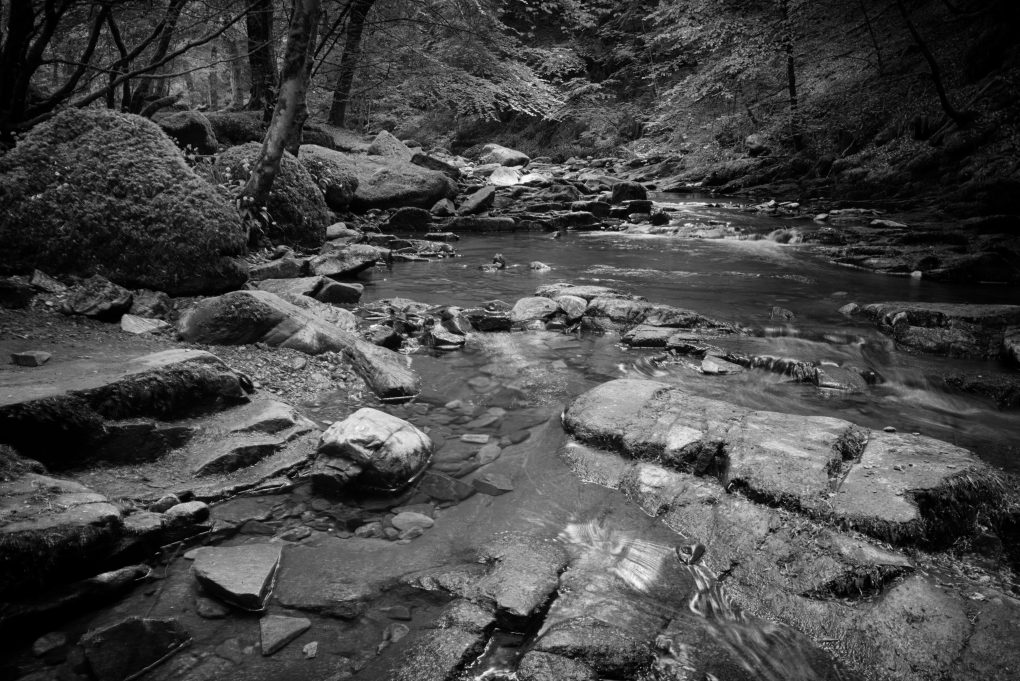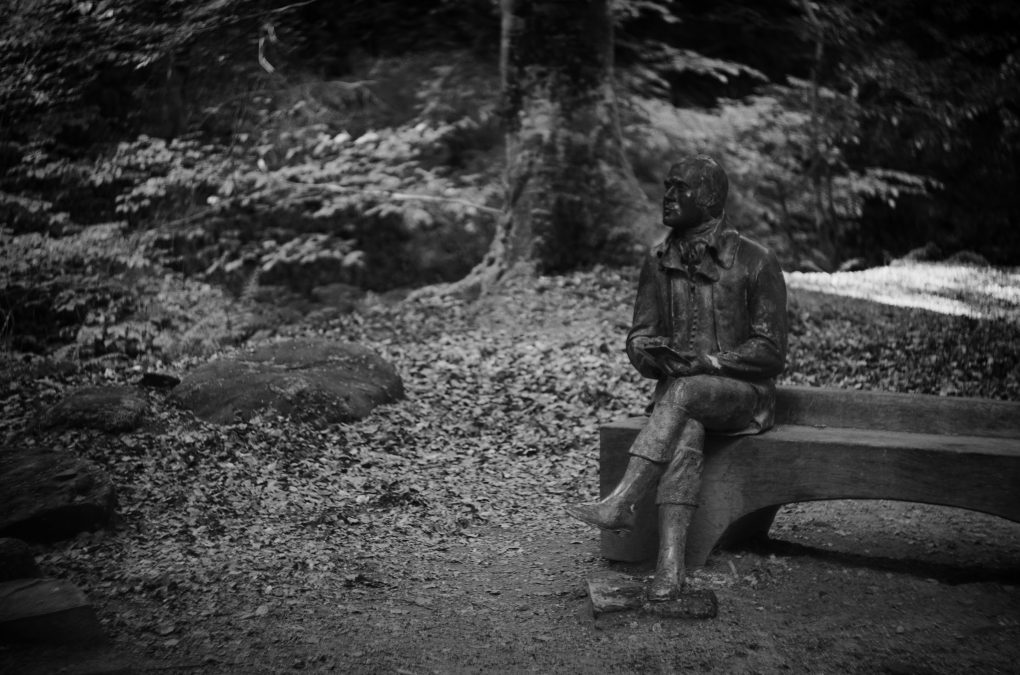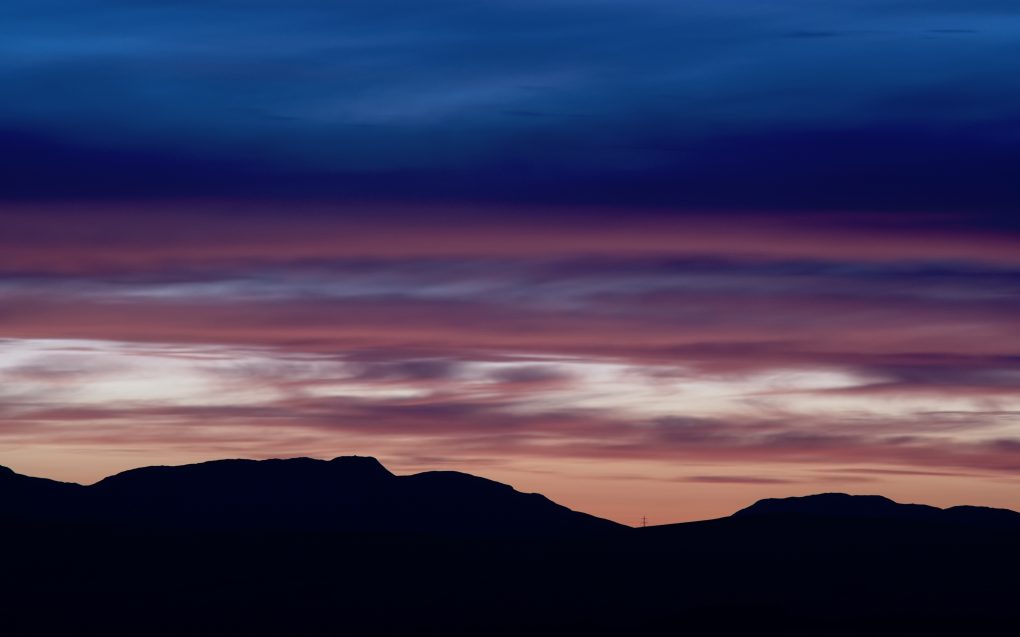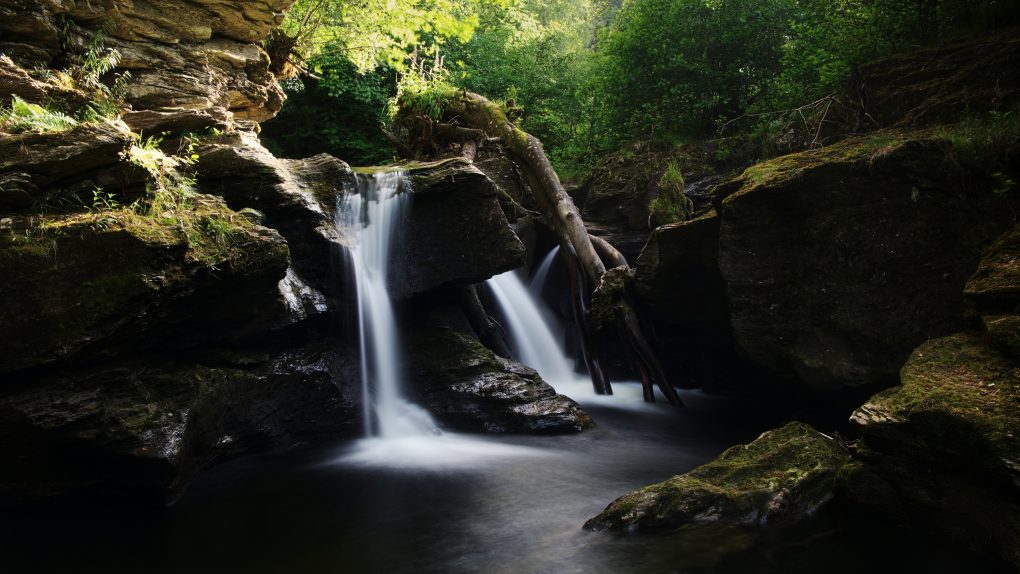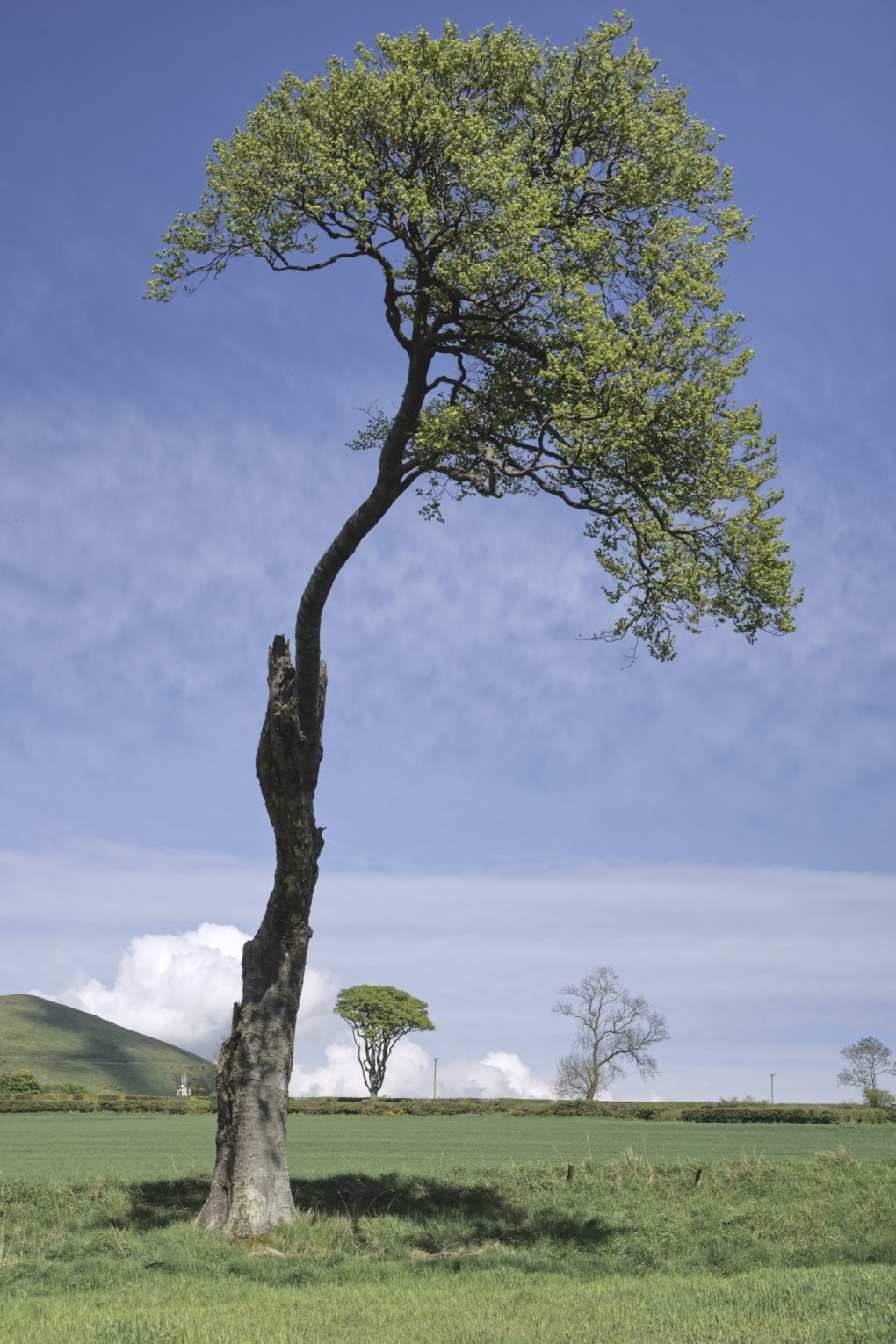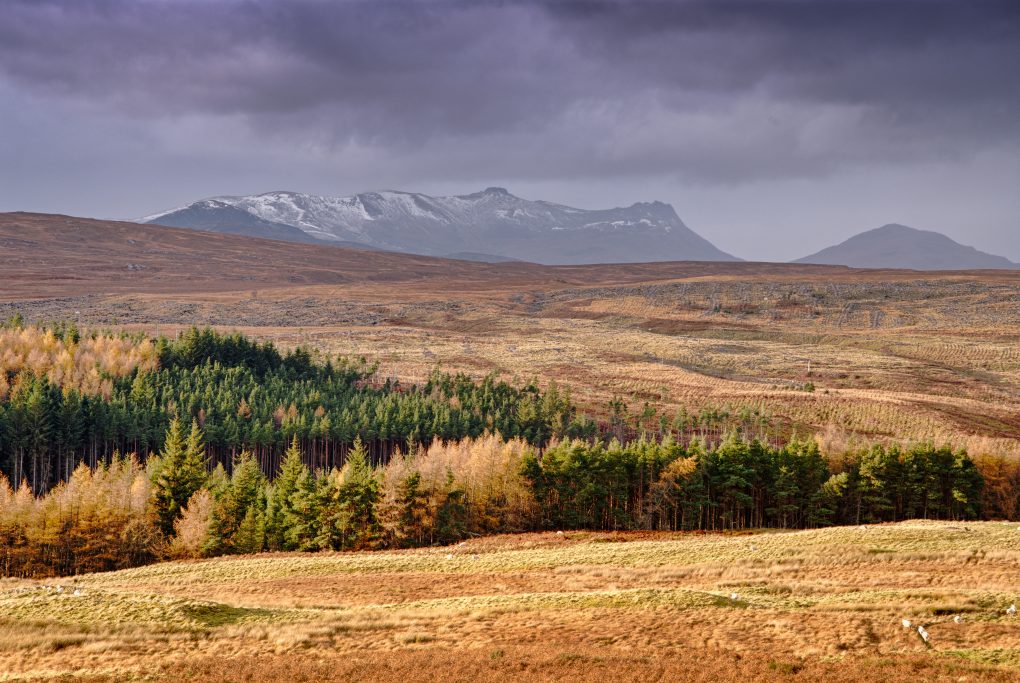A handful of photos from walking the dog one afternoon – stark trees, mist, low clouds, distant hills: Perthshire landscape at its autumnal moodiest.
Category Archives: daily
Caithness Holiday Day 5: Badbea Clearance Village
An unusual choice of place to visit on the last day of one’s holidays, but an important monument to Highland/Caithness history nonetheless, and one ideally suited to a bleak cold foggy day, too.
Forced off the land as part of the Highland Clearances, people from the surrounding areas (Ousdale, Auchencraig) sought refuge at Badbea. Not the most hospitable area to try and make home, situated right on perilous cliff-tops in a location so windy the cattle and even children had to be tied down to stop them being blown away.
The bleakness certainly suits black and white.
Caithness Holiday Day 4: Duncansby Head and Stacks
Ignoring the previous post about offensive misuse of woodland, my fourth day of the holiday started out pretty well, with a trip to John o’Groats – awful tourist-trap of a place but at least they’ve renovated the hotel since I was last there and the ice-cream (2 scoops) was excellent.
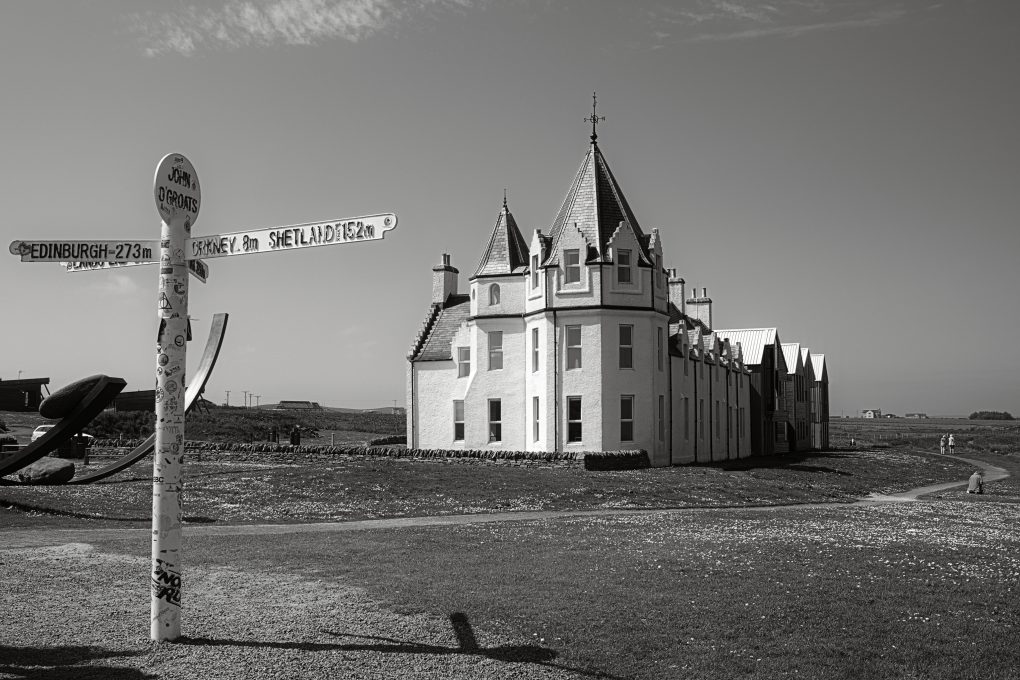
The famous hotel at John o’Groats. I’m pleased to see it’s had a much-needed renovation since I was last there. A total tourist-dump, but at least one of the shops offers rather good icecream on a sunny day. 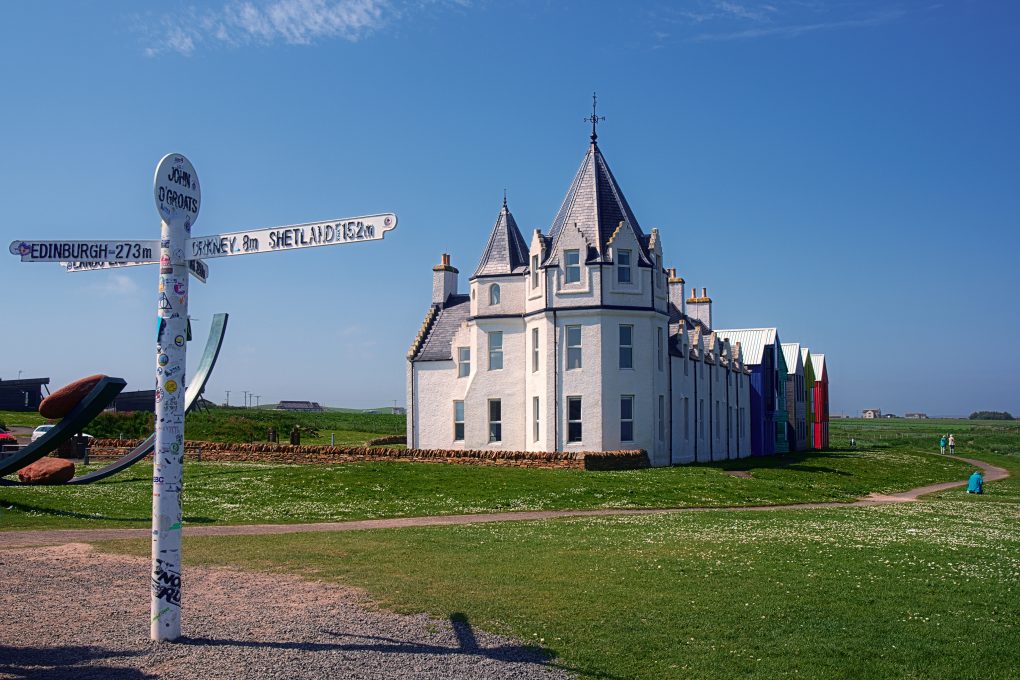
The famous hotel at John o’Groats. I’m pleased to see it’s had a much-needed renovation since I was last there. A total tourist-dump, but at least one of the shops offers rather good icecream on a sunny day. 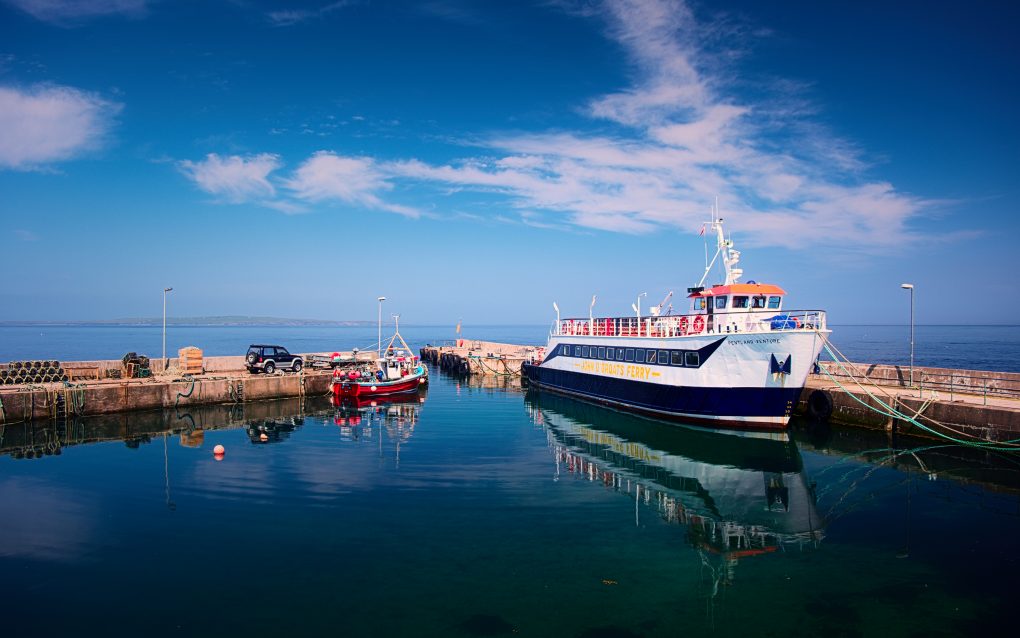
A ferry waiting in the harbour at John o’Groats 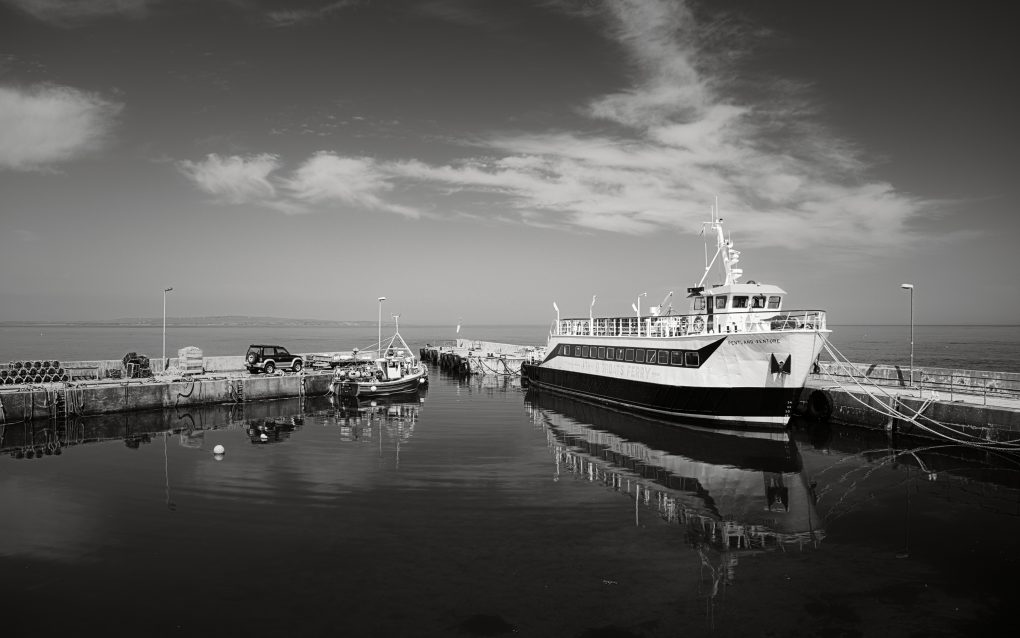
A ferry waiting in the harbour at John o’Groats
The sea stacks themselves are pretty awesome to behold, middle red sandstone showing evidence of having formerly been attached to the land but eroded away by the sea.
We proceeded to Duncansby Head – ignoring the lighthouse, walking down the coastline to the sea stacks. On the way, a large group – maybe 60 folks – were crowding some of the cliff-tops looking south, watching a small pod of Orcas swimming off distant headlands. Unfortunately the one kind of lens I didn’t have with me then was a long zoom – but the shouts of joy when one of the orcas blew or jumped were incredible.
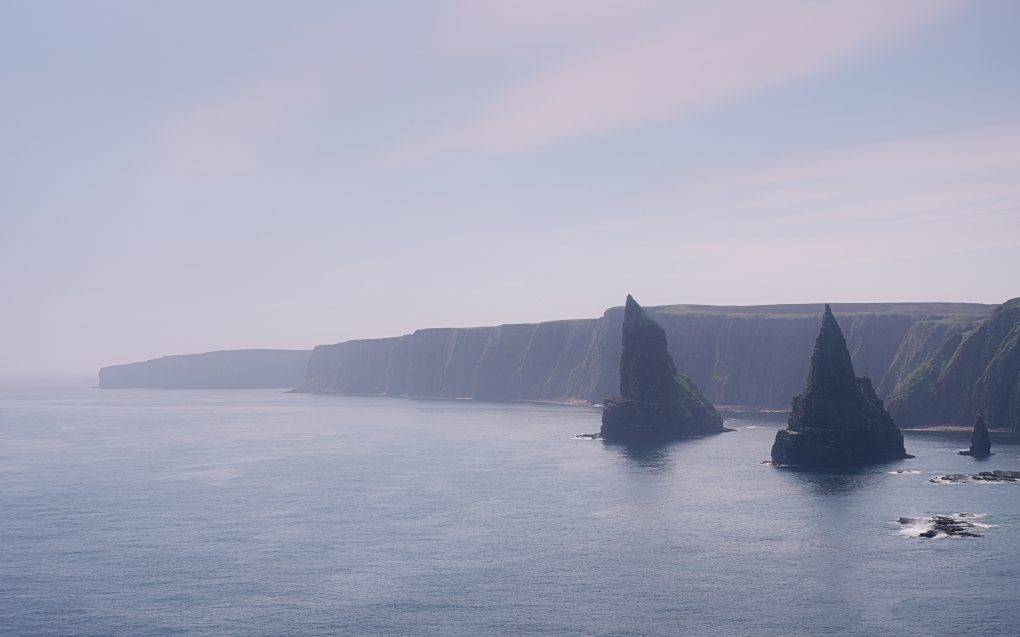
The far north-east corner of Scotland – subtle haze looking south into the light through the mist. As I shot this from a well-known viewpoint, there was a crowd of approximately 60 humans around, all watching a herd of orcas swimming off the far headland. 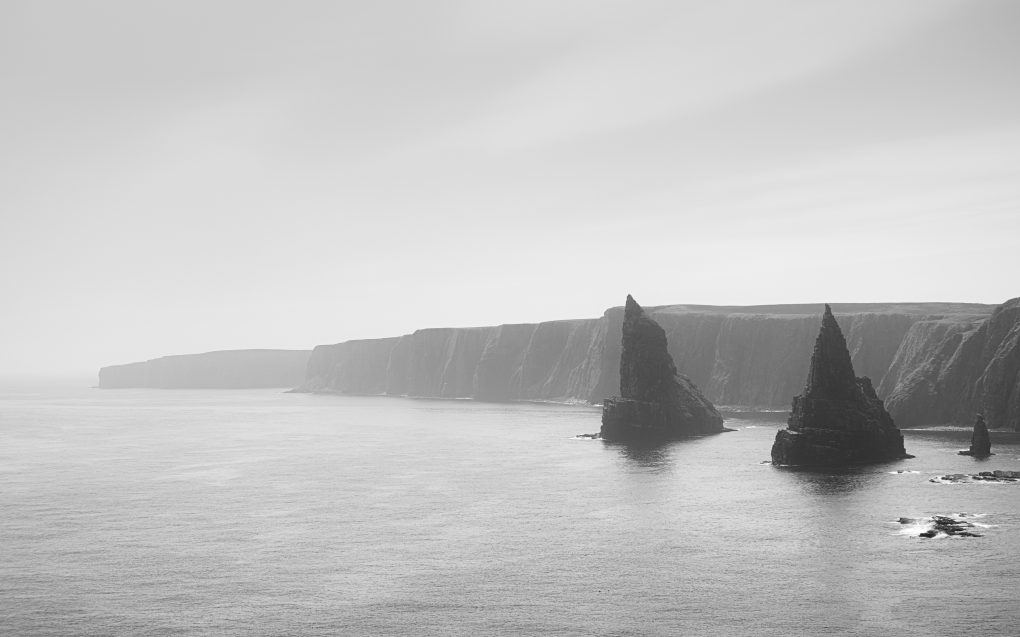
The far north-east corner of Scotland – subtle haze looking south into the light through the mist. As I shot this from a well-known viewpoint, there was a crowd of approximately 60 humans around, all watching a herd of orcas swimming off the far headland. 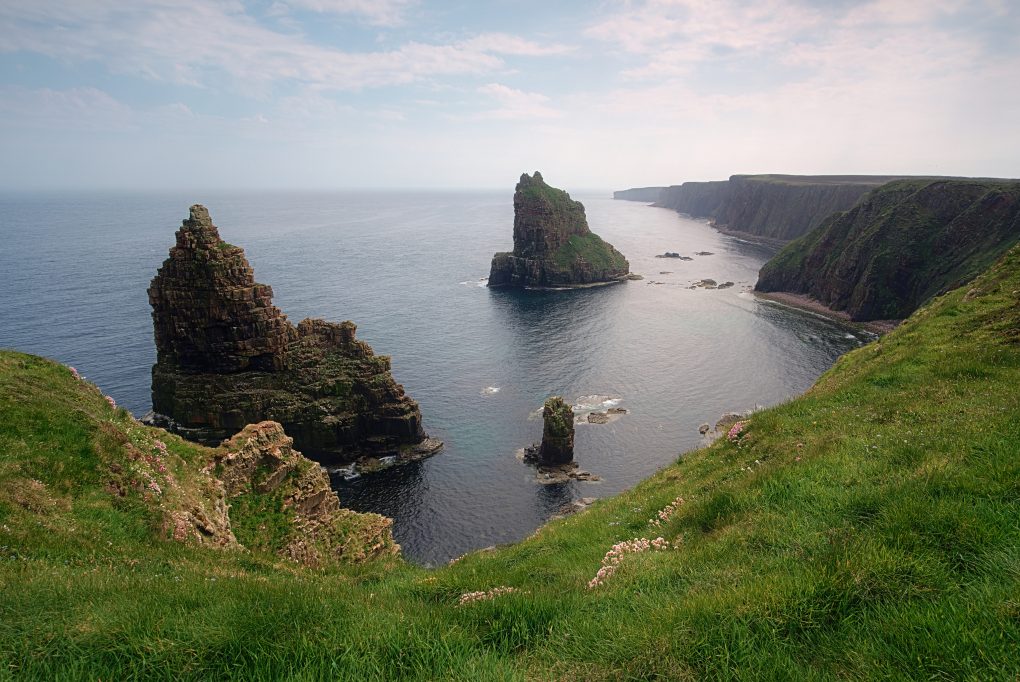
Coastline around the far north-east corner of Scotland: 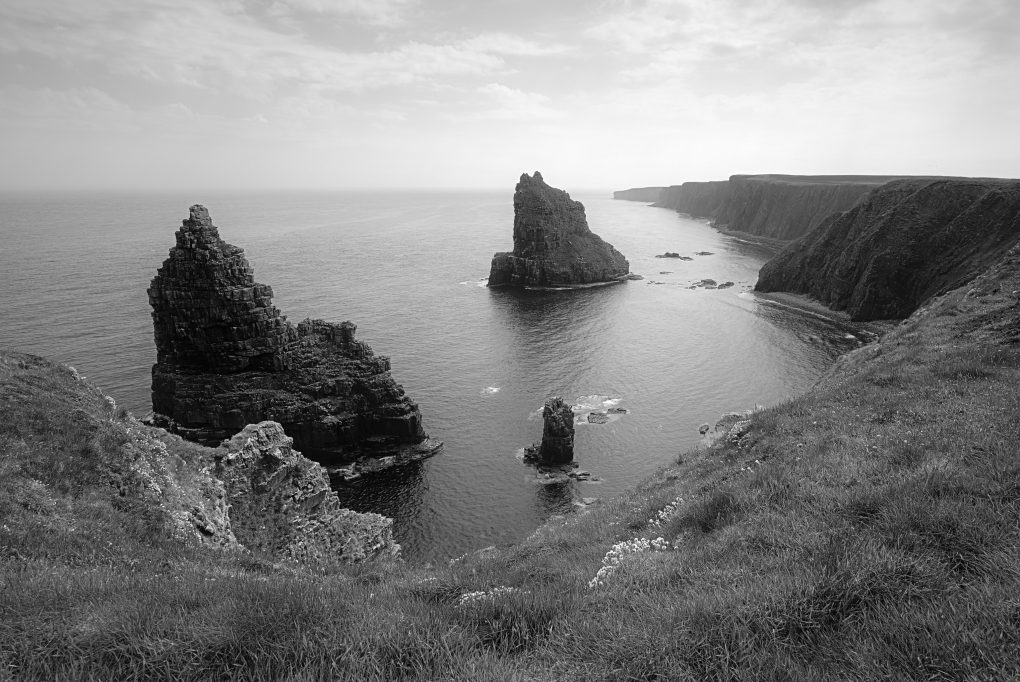
Coastline around the far north-east corner of Scotland: 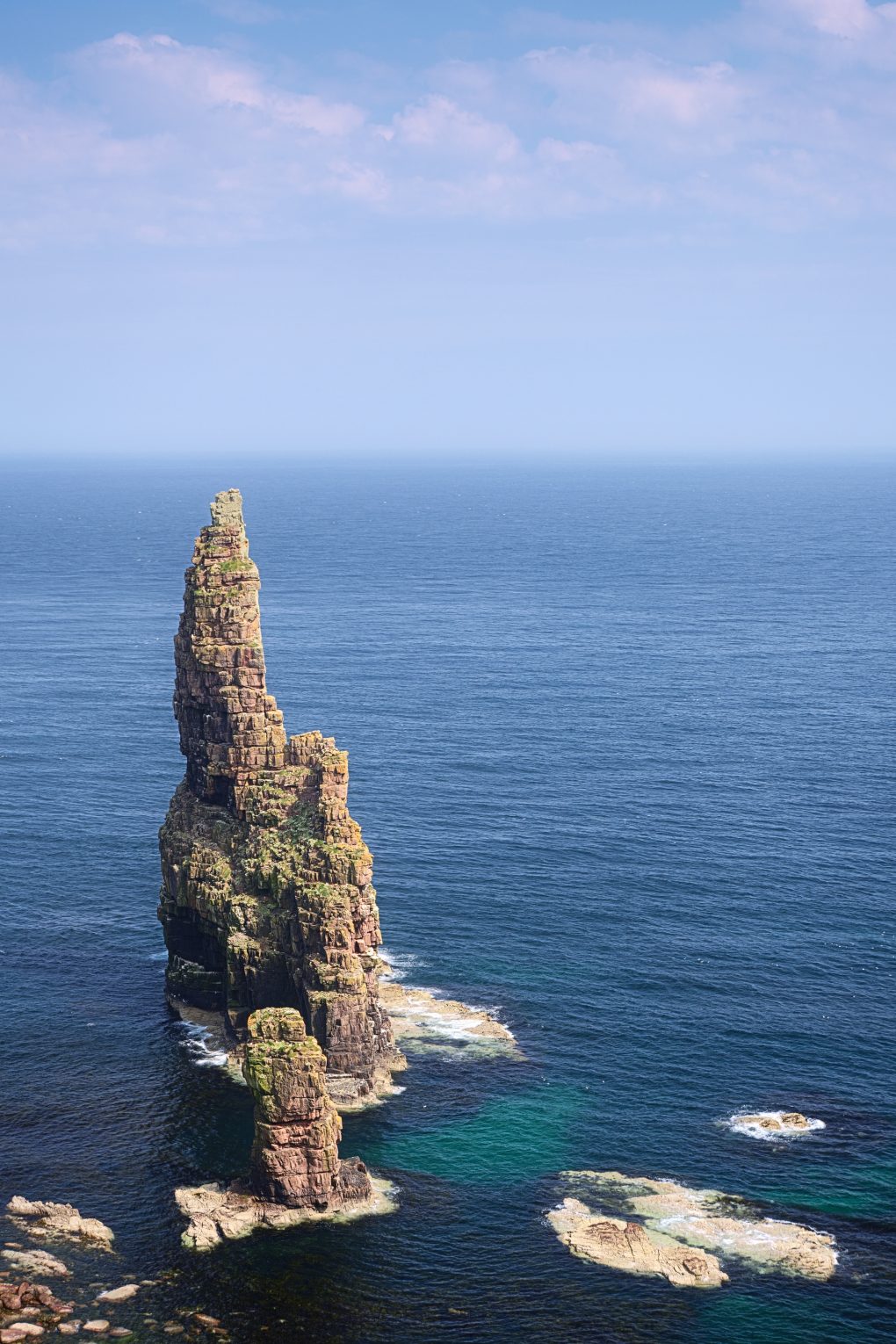
A better angle on the stacks – with the sun bright due south at noon, I walked further down the coast beyond them and looked back up north instead. 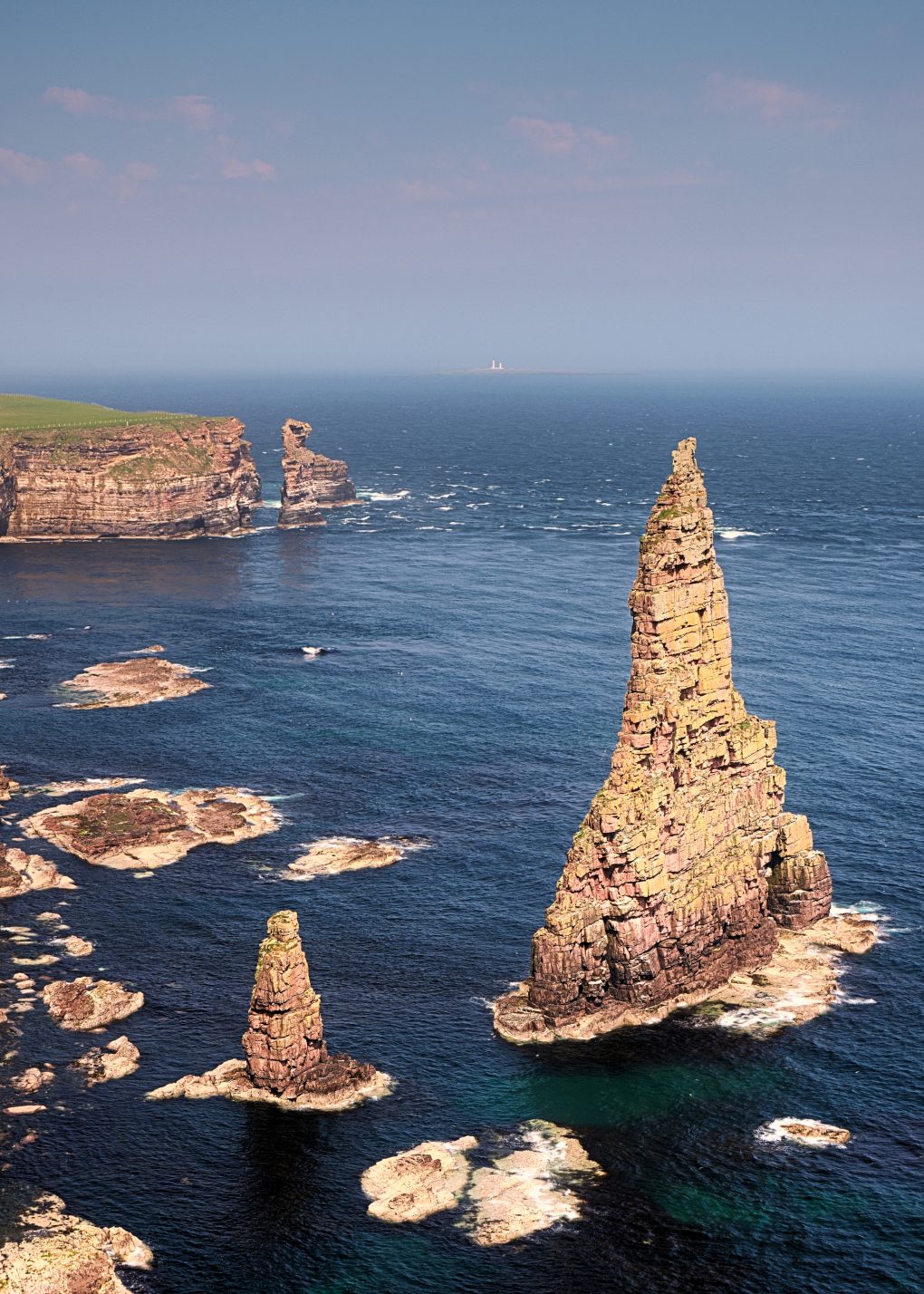
A better angle on the stacks – with the sun bright due south at noon, I walked further down the coast beyond them and looked back up north instead.
On the way back, a disturbance in the water just away from the cliffs caught my eye: a peculiar kind of standing wave with the shape staying more or less constant. Obviously a conflict of two tides, one running along the north coast between the mainland and Orkney, the other flowing up the North Sea; on checking wikipedia later, that corner of the Pentland Firth is known for two tidal races, the “Duncansby Race” and the “Boars of Duncansby”.
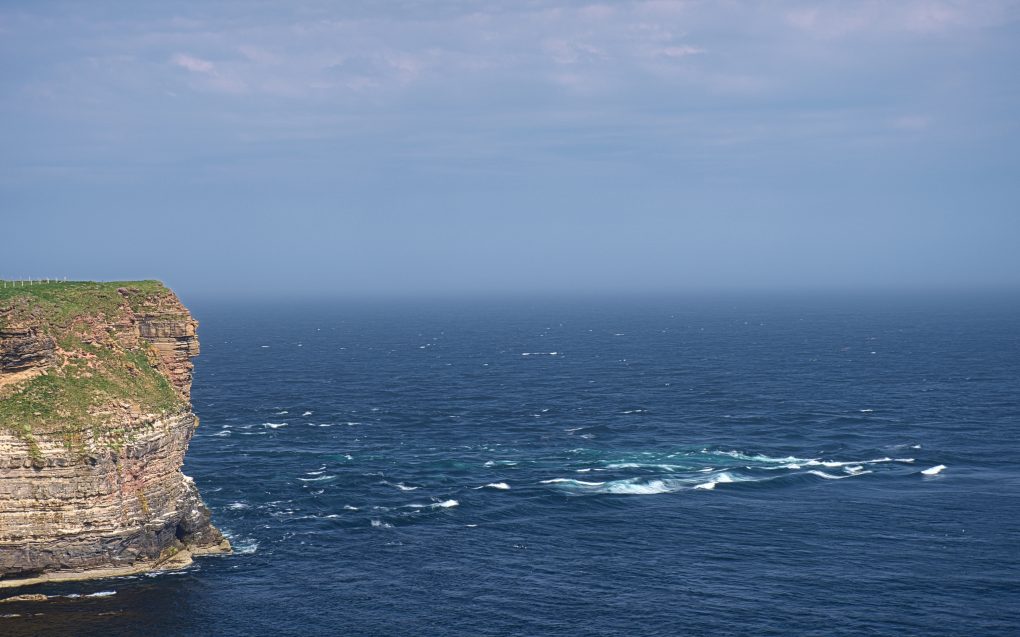
Caithness Holiday Day 4: when a forest is not a wood
Sometimes I have to tell it like it is. Dunnet Forest is one of the least pleasant collections of trees I’ve ever had the displeasure of walking through. From start to finish, a total misuse of the land.
Within 50yd of the carpark are multiple signs warning owners to pick up after their dogs and to use the bin, even with the emotional manipulation that excrement left around could blind a child.
The woodland itself is awful – monoculture spruce with barren lack of undergrowth.
The only burn I saw was a stretch of ~70yd of stagnant scum-covered sludge, vibrant orange with industrial pollution.
There is a reek of unjust hypocrisy about the whole affair: one cannot help but think, even if there is some credibility in the idea of a small kid putting something off the forest floor in their eye, by surface area and decay-rate alone, they would be far more likely to encounter danger in the polluted stream than from anything left behind by a dog – which would, if anything, go some way to re-fertilizing the abused ground beneath the trees.
Toward the end of the ill-defined loop route are several sculptures carved out of the remains of some of the tree trunks. You’ll have had yer entertainment then – but not your walk in nature.
I could not escape fast enough.
Caithness Holiday Day 3: Strathnaver and Strathmore are not Caithness
As the weather dictated, a slight detour from the east coast away out to the centre and west of the top of Scotland. I explored the road down Strathnaver, starting with a small church at Syre (a distinctive tin-tab construction originally built by the Free Church of Scotland as a mission to nearby Sutherland estate, but now joined to the Church of Scotland since 1929):
Having been there last autumn, the view from the head of Loch Naver was just as compelling (and just as windy)
A few hundred yards north of Altnaharra a small road leads off through Strathmore, passing some beautiful landscape scenes of Ben Loyal across Loch Meadie:
Further along, I discovered a beautiful but thought-provoking view: at Allnabad, a former shepherd’s house, now ruined and roofless, looks out over a barren landscape over the length of Strath Coir an Easaidh to beautiful undulating mountains beyond. Unusually for me, I made quite significant changes to the scene – the real lighting was strongly blue-green (a very Fuji summer landscape colour palette) but it works better with hints of relative colour beneath a pale sepia wash for a classic old-time look. (I’ve also slightly moved the small pile of stones relative to the building.) The resultant photo is called “The Story”, partly as a homage to the Runrig song of the same name, partly because of the sense of time – evolution of the land on geological and sociological timescales.
Continuing north up Strathmore, I found the remains of the broch at Dun Dornaigil – conveniently built beside the road 😉 – on a lovely sunny day, just had to fly the drone up where a location a bit downstream made an excellent composition of river leading to the broch and Ben Hope in the distance.
From there we drove up to the far north coast and followed the A836 east, keeping an eye on the landscape to the south. Ben Loyal makes an unmistakable outline with its four peaks; somewhere nearer to Tongue there was a convenient layby giving a comparatively clear view across to the mountain.
Caithness Holiday Day 2: Whaligoe Steps and Camster Cairns
Many moons ago… the parents and I were on holiday around Caithness and having trouble finding the way to Whaligoe Steps. As his tractor turned by the end of the field, we stopped a farmer to ask directions. To southern ears, the instructions sounded memorably like “turn right at the fussky-osk”. With a little thought we established the meaning… and twenty-two years later I still remember the turn of phrase and was pleased to identify the first phone-box in this Spring’s return visit.
Whaligoe Steps themselves are 365 steps down the side of a steep cliff to a former port for offloading herring boats; women would gut the fish and carry it up in barrels.
The place itself is quite an impressive geo with a fault nearby in the rock – strata lines pushed up by thrust – and pleasant views out to sea.
Further down the road are Camster Cairns – quite impressively large piles of rocks with interior chambers, perhaps the oldest buildings in Scotland at 5000yr old.
It had been another ludicrously hot day, with temperatures up over 25-28ºC, so we finished the day’s explorations on the north coast at the Slates of Fulligoe in East Mey, where the setting sun was partially obscured by a thick sea haar – very pleasantly cool.
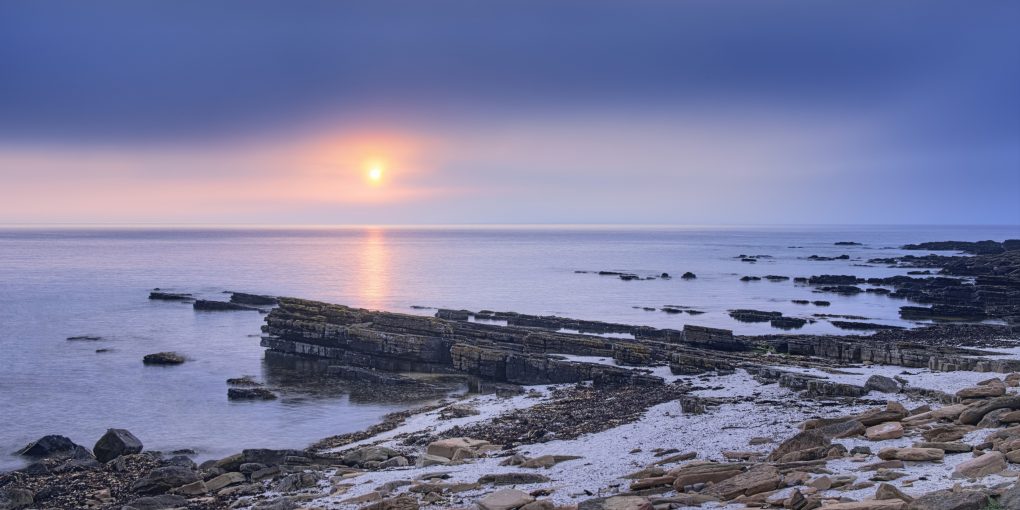
This was the second evening I’d set out to make a timelapse of the sunset into dusk. At least this time I was prepared for haar coming in off the sea (chose a safer less-cliff-top location near the path back, for starters). It did not disappoint: over the course of an hour the sun moved, the waves came and went, and a huge bank of fog moved in transforming the scene from brilliant sunset reflecting on the water, to complete white-out. All the possible moods of the landscape in barely an hour – quite awesome.
This photo is a temporal flattening of a timelapse sequence – using the intervalometer to shoot HDR brackets 3*±1EV at regular intervals which can be made either into a timelapse video or averaged-out into a still, like this. (The sun itself is blended from fewer images to avoid motion blur.)
Abstract Cloudy Skies
Simple pleasures. Two photos of clouds catching the evening sunset light.
A Bit Damp
Another Friday evening, another great way to end the week with a camera in hand. As I finished up work, wondering whether to mow the lawn, I looked out the window and saw awesome clouds zipping past.
Grab camera, grab Dog, go walkies and shoot whatever happens. There was rain. There was sun.
And after the rain, the sun illuminating the gently undulating crop fields contrasted amazingly with the remaining ominous clouds beyond.
Exploring Strathearn
I spent a happy evening exploring the Quoig area in Strathearn – the floodplain of the river Earn between Comrie and Crieff, south of the A85. Disused railway line, Sir David Baird’s monument and a luscious sunset. Can’t complain 🙂
Birks of Aberfeldy
A few weeks ago, I spent a happy Saturday afternoon strolling around the Birks of Aberfeldy, testing the newly acquired Fuji X-T20.
For context, a general landscape of the lower end of the gorge with the Moness water flowing around rocks and pebbles in the riverbed:
For consistency, everything else was shot coupled with the Helios 58mm f/2 lens using the Acros+Yellow black&white film emulation mode and ISO 200.
Some abstract tree foliage patterns:
Details of tiny flowers closeup:
Of all the mini-waterfalls up the left side of the gorge, I’m particularly fond of the way the water flows over the moss on this one:
Statue of Robert Burns sitting on a bench:
Shortly after these photos were made, the heavens opened – a huge cumulonimbus cloud the shape of the Starship Enterprise disgorged itself over a lot of Highland Perthshire, flooding the roads in Aberfeldy itself; as I was walking down the north side of the gorge, it was quite disconcerting feeling the sandy gravel getting washed away in the channels underfoot. Fun fun!
Twilight
Some more tests of the Fuji X-T20 in low light conditions.
Summer has the worst daytime light for photography with harsh shadows and washed-out pale tones; however I love the night sky with its permanent twilight (at this latitude) giving cobalt blue sky with hints of the sun’s warmth just below the horizon.
Plus it’s more comfortable than winter astrophotography 😉
Three studies in cloud structure – nature’s abstract patterns and a tiny blob of light of a hamlet across Strathearn:
Continuing the anthropocene-influence theme, glorious blue, red and pale clouds in an orange-tinged sky against a tiny pylon breaking the horizon:
Waterfalls and Mountains
We spent Saturday afternoon driving around the Tay Forest Park – up to the Mains of Taymouth at Kenmore for lunch then along the south Loch Tay road to the Falls of Acharn – a comparatively steep climb up the side of the gorge and negligible water in the falls, but there was pleasant subtle light making the most of the colours on the surrounding rocks:
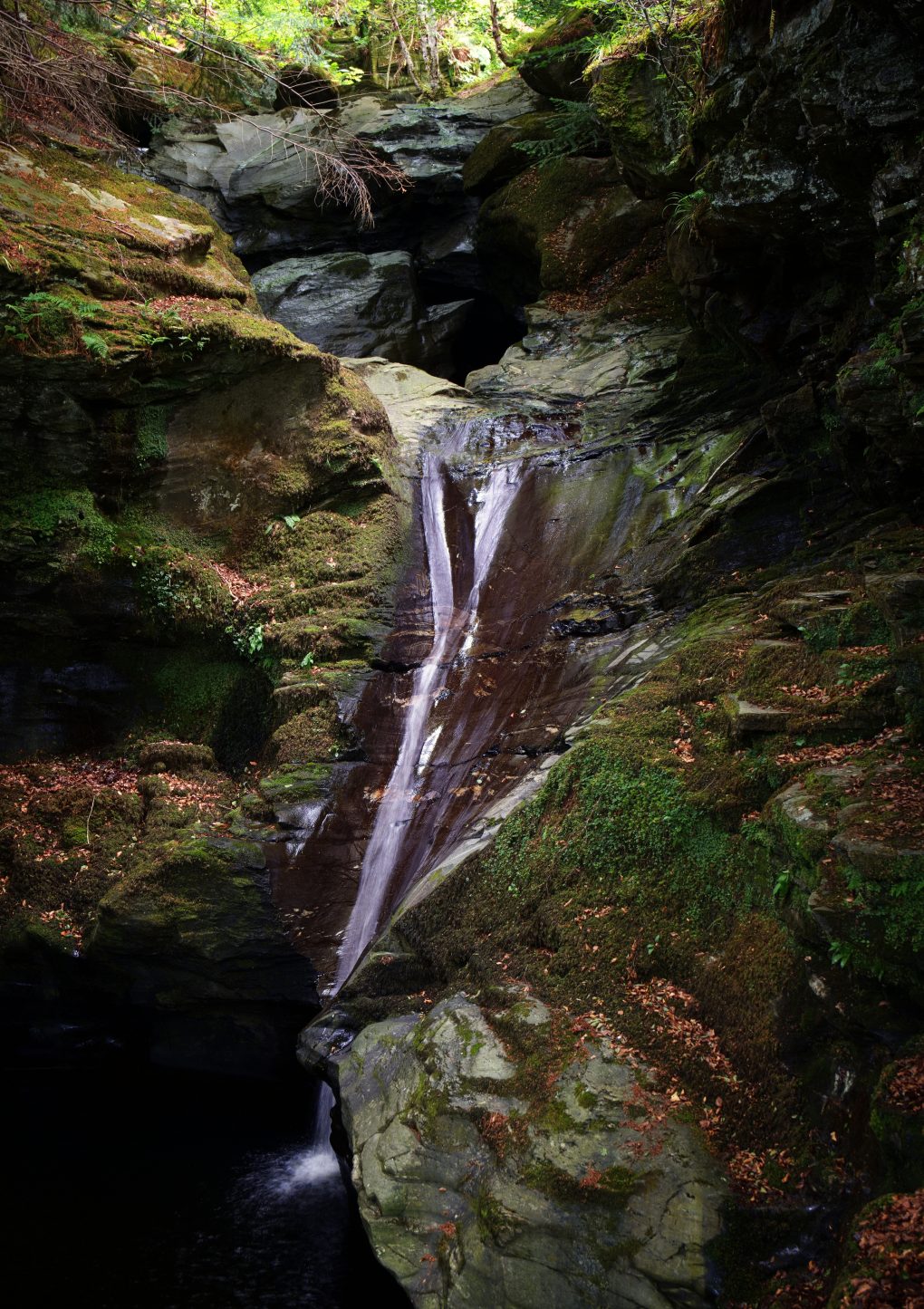
Nice rocks (typical Highland semi-pelite) covered with colourful beech leaves and green moss. Shame they’d forgot to turn the water on…
Next stop: just outside Ardeonaig there is a tiny layby where the view of the southern end of Loch Tay opens up. There was pleasant light on the sides of Ben Lawers too:
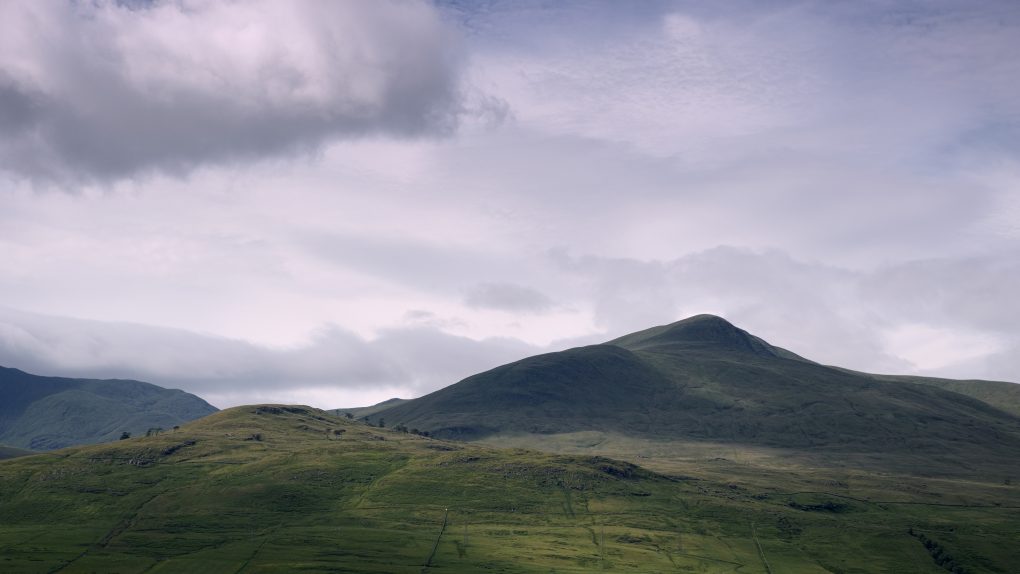
Still a favoured viewpoint right by the side of the South Loch Tay road – lovely soft mountainside illuminated by gentle light and shadow.
Driving further down the road to Killin, there was an awesome cloud inversion flowing around Ben More in the distance, outside Crianlarich – so I stopped at Lix Toll services and made a panorama of it:
Observant viewers will spot there’s even a tiny fragment of snow remaining toward the far left of the shot on Stob Binnein – not bad for the last week of June!
The final stop of the afternoon was at Edinample Falls along the South Loch Earn road – a small gorge but beautifully shaped with pleasant light through the surrounding trees and a decent amount of water flowing around the rocks.
Recovery: Keil’s Den, Fife
Still feeling very under the weather from a bout of food poisoning, I spent a happy Sunday afternoon walking around Keil’s Den outside Lower Largo, Fife – recommended by the Woodland Trust as a site for seeing bluebells.
It was still a week or two early in the spring for bluebells, but there were a few in evidence, along with a few expanses of unmistakeable white wild garlic.
There’s something pleasantly restorative about a walk in the woods: something about the green hues, dappled light and shade, cool breezes under the trees. It works.
My favourite photo from the afternoon was this strange beech tree – a strong young stem well on its way to producing a new crown of foliage, growing from the remains of an old battered and eroded upright trunk:
Around Rosal
This was a strange place of varying thoughtfulness. Having previously visited Aoineadh Mor and found its handful of ruined crofts more thought-provoking, this was rather the opposite experience: having far more settlements dating back thousands of years including cairns, a souterrain and remains of crofts, with a history of particularly brutal evictions, there’s no real viewpoint from which one can see the extent of the clearing and experience all the time or place at once, so it lacks a certain atmosphere.
One thought, however. The Highland Clearances were mostly for the purposes of replacing crofting (seen as not cost-effective) with sheep farming (supposedly profitable). In practice, it’s a story about commercial failure: the sheep did not prove profitable, rendering the grassland barren; the monoculture spruce woodlands being farmed as the latest cash-crop are also barren, failing to nourish the land; the eviction of folks living a subsistence existence (which increasingly feels the innocent honest approach) was an offence against humanity – and yet the blasted sheep still remain.
The state of the Forestry Commission’s tourist information boards also being cast down on the ground, however, did provoke thought – is that sheer vandalism, an artistic statement about care and decay of property, or super-artistic irony that preservation itself should go the same way of all things?
The landscape did provide a few moments of beautiful contrast, illuminating the foreground trees against the shadowy dark might of Ben Loyal, however:
Around Strathnaver
Strathnaver is a beautiful area – rural life, peaceful and quiet, where the only traffic jam is a herd of sheep trundling along the road beside the loch. Simple and elemental, a play of sky and land, light and limited human influence.
Outside Altnaharra:
Beside Loch Naver:
